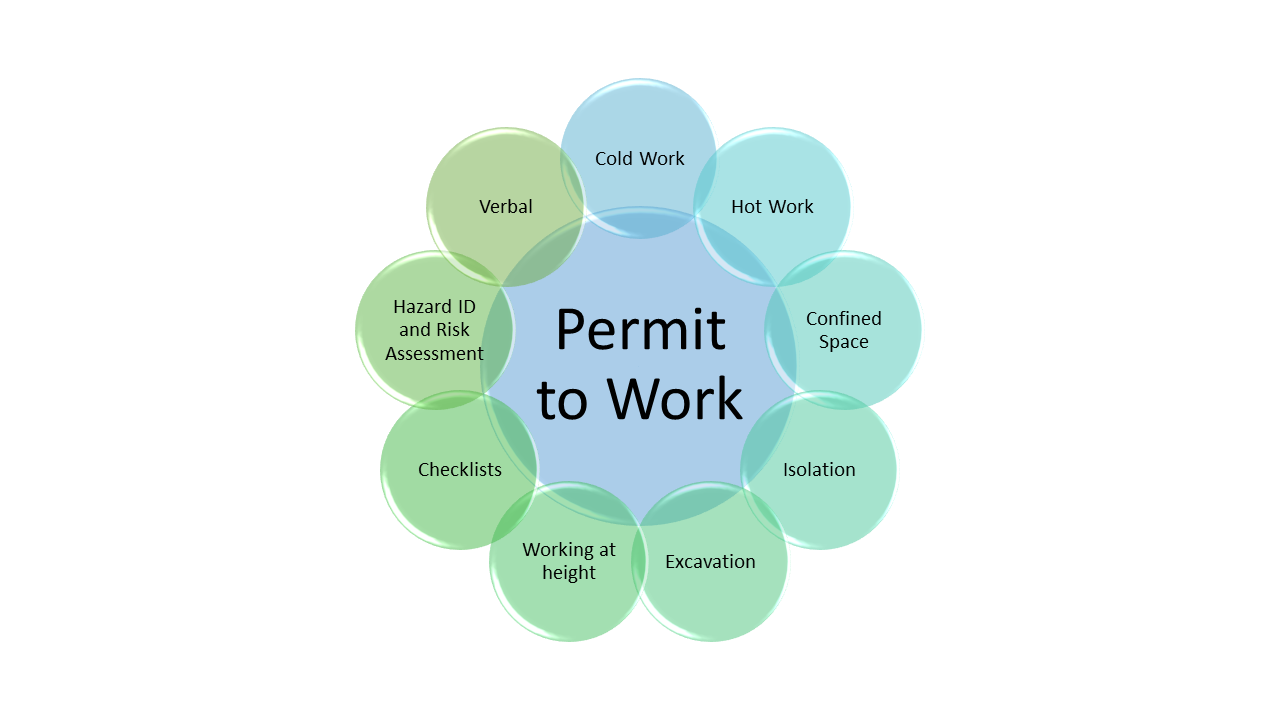Permit to Work Insights
The effective operation of permit to work systems are critical to ensure we manage the hazards associated with non-routine work at process facilities. Here are some observations from our experience that may help you improve your system:
- Permit to Work Systems are organisationally dependent – Don’t just pick another system up and run with it. It should be tailored to your organisation and process which may have different types of hazards e.g a chemical process will need a different type of system to a wood processing facility where the principal hazard is moving machinery.
- Opinion: To maintain respect for the system all rules should not command the same gravity e.g. The need for a safety observer physically present at the opening of a confined space is absolute whereas the number of re-issues a permit is allowed to have will have been arbitrarily selected. Allow discretion where appropriate
- Management fortitude is required to make the system work. All managers who have a responsibility defined within the system should have an in-depth knowledge of the system and be actively seen to fulfil these responsibilities. These cannot be delegated if you want the system to work.
- Isolations 1: Each company will be passionate about its own isolation procedure. Be cautious about changing it. Preference: a locking system – reason: tagging systems are totally reliant on the paperwork which can, and do, break down at times of high demand. For example, If, during a 10-day shutdown, a system has 50 isolation points the requirement for permit suspension and re-issuing each day can create a paperwork nightmare which is just asking to fail.
- Isolations 2: Some industries are passionate about giving each person a personal lock to be applied to each isolation (this gives each individual working on the job control to prevent an isolation being removed before the work is complete). In this case, if there are a total of 30 people working on all jobs (within a system) there could be several hundred locks applied. This is obviously impractical and needs careful consideration for lock management for “system” isolation.
- PtW systems are for non-routine work but be careful. Changing a pump may be routine for a fitter but who needs to know what hazards are involved that may impact the unwary and what other work going on that may be impacted? We have been involved in an investigation this very activity led to a serious incident. Very little work on a processing plant would be classified as non-routine. Regardless, this point need to be nailed down when developing your system.
- Verbal Permits. Verbal permits were created to catch low risk work which otherwise may go un-permitted. Put your “rose- colored glasses on and say this doesn’t happen!! Work is still recorded and there are still rules. The danger with verbal permits is that they may be abused. To this end the jobs which can be carried out under a verbal permit should be specified and management oversight is essential.
- Resourcing: Depending on the number of permits issued each day a PTW system may require a dedicated PTW issuer and a facility to manage the system.
We have developed a Permit to Work Checklist which we use within our auditing activities. Click this link to get a copy.


